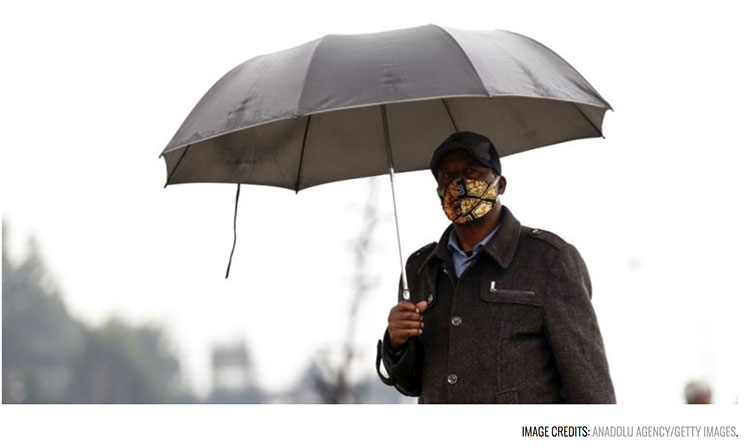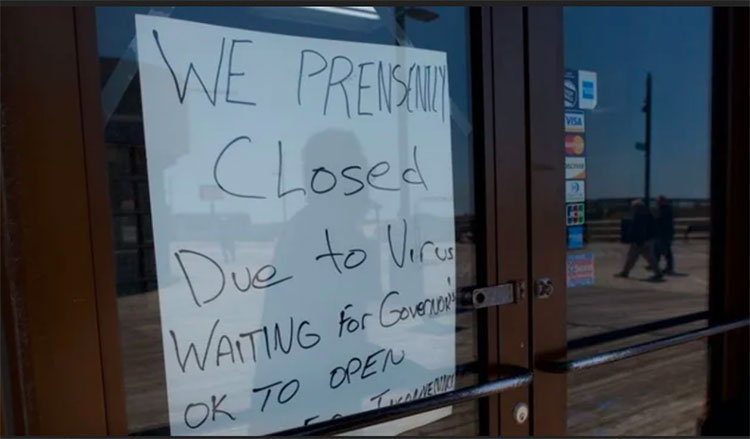
AmericaCanWeTalk.org
This ought to be the theme set by President Trump in his renewed Covid-19 briefings, and the completion of the sentence is: “we would not have ordered a shutdown—and that is why we can now lift all remaining lockdowns and covid-related restrictions throughout this country.”
The overwhelming power of this theme, and the overwhelming rationale for using it, comes from the simple fact that it is true.
- We know now that Covid-19 is an unpleasant disease, a dangerous and potentially fatal disease for the elderly and infirm, and an extremely rare disease in children.
- We know now there are therapeutic treatments—hydroxychloroquine is the foundation of one entire branch of remedies (which Trump himself made use of), and inhaled steroids (budesonide being one) are another—which are showing undeniable efficacy all over the country.
- We know now the lethality of Covid-19 is comparable to that of a bad flu (and that assumes the reported ‘Covid-19 deaths’ are not substantially overstated, though there is abundant evidence that they are—which would mean the actual lethality may be significantly less than a bad flu).
- “Spikes” in new ‘cases’ reflect increased testing and the predominance of mild and completely asymptomatic incidents of the disease (and a large amount of false positive and fraudulent reporting); they have only confirmed the low lethality rate (and driven it lower)
Had all of the foregoing been known at the time of the initial outbreak, there would have been no lockdown, and probably no restrictions of any kind. The disease would have spread as contagious diseases do, the especially sick would have been treated in hospitals and ICUs, and the remaining cases would have run their course with infected people missing a few days of work, recovering, and going back to work.
There is no shame in acknowledging this truth. A contagious virus seeming to originate from China and possibly from a CCP bioweapons lab deserved special precautions. The US national public health authorities advised special precautions, and President Trump followed their advice. To say now that their advice turned out to be overcautious is not to say they acted in bad faith (though the jury is still out on Fauci), nor is it to say that Covid-19 is no big deal.
It is simply to point out truth in a common sense, understandable way that allows Americans to break free of the paralysis of fear—and simultaneously breaks the rationale of the continued stranglehold that some state and local officials are still imposing on the American people.
It is unfathomable that President Trump does not know the truth about what we now know about Covid-19.
And so Trump’s continued public statements that:
(1) label Covid-19 ‘the plague’;
(2) tout his decisions to shut down air travel from China and then authorize the shutdown of the country as ‘saving millions of lives’;
(3) endorse the PC view that mask-wearing is a patriotic, unselfish act; and
(4) enshrine the mantra of urging patient endurance because ‘the vaccine is coming, the vaccine is coming!”
…can only reflect
(a) a political calculation that admitting governmental overreaction to Covid-19 will harm his re-election prospects, or
(b) a personal predilection against ever admitting error—even when it was not in fact his error, or
(c) that his own germaphobia has him still fearful—
or some combination of the above.
This is a tragic, unnecessary and massive miscalculation by President Trump, and the American people are paying a huge price for it. They are ready to power their economy to a strong rebound, but Trump is enabling the lockdowns and fear to continue. His public posture allows Newsom and Cuomo—to name just two blue state governors—to continue the dictatorial tyranny in the name of ‘science’, when there is no science whatsoever behind continued lockdowns. But there is a continuing fear created by the initial overreaction, and this is easily leverageable by governors and local officials who want to use it to be little Napoleons in their own domains.
Just in time for the November election, the continued lockdowns in major states are going to make the monthly economic news for August and September (and maybe even July) likely to turn stagnant or negative. The MSM will go bonkers when that happens, and Trump will be left talking about another ridiculous funny money stimulus, bizarre ideas for how to operate schools with masks and social distancing, and promising delivery of a vaccine that still won’t be ready but will be proceeding on what looks increasingly like a rushed, caution-to-the-winds development plan.
A majority of Trump supporters—probably even a large majority—will walk barefoot over broken glass to vote for his re-election in November no matter what the status of Covid-19 lockdowns or anything else, simply because the alternative of the radical left governing this nation is too frightening to even consider. But if Trump loses the election because of a re-sagging economy, unhappy parents of school-age children, and general fatigue from pandemic fear—all associated with Trump as President—he will have no one to blame but himself.
President Trump, please trust the truth. Truth has power; truth enables and empowers freedom—which is the bloodstream of America. Admitting the truth is calming, clarifying, health-giving.
The truth is: if we knew then (back in February) what we know now about Covid-19, there would have been no lockdowns. Which means there do not need to be any lockdowns now.
Let’s trust our doctors and healthcare system to ride this out, and get on with life in America. NOW.


























